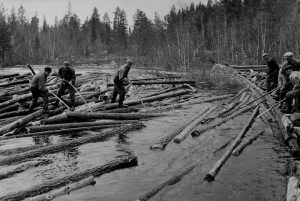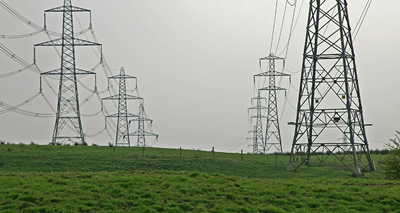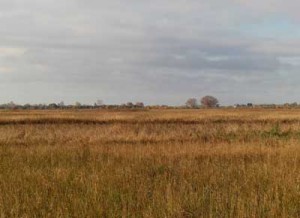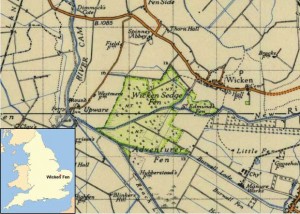
Timber floating in northern Sweden, ca. 1950. Photo courtesy of the Skogsbibliotekets arkiv, SLU, Umeå.
Sweden is one of the largest timber exporters in Europe. The country has been an exporter since at least the early modern period. That is not surprising because pine and spruce forests cover large parts of northern Sweden. These forests are part of the single largest land biome on earth, stretching along the pole circle of Eurasia and North America: the taiga.
Not that long ago, the forests of northern Sweden were almost untouched by human hands. That changed during the 19thcentury when a timber frontier moved across northern Sweden, driven by the demand for wood in the industrialising countries of Europe. The timber frontier forged changes across the forests of northern Sweden, not in the least the construction of tens of thousands of kilometres of floatways. This transformed not only the ecological structure of the forests, but also the social and economic dynamics of Sweden and shaped the modern country that we see today.
Erik Törnlund is a forest historian who studied the transformation of the forests in northern Sweden and the development of the floatway system. On this episode of the podcast Erik examines the Swedish timber frontier and the associated environmental, economic and social transformations that have occurred in Sweden since the 19thcentury.




Recent Comments